University of Bolton, Deane Road, Bolton. BL3 5AB
Tel:
Email:


“At the University of Bolton, we take great pride in providing a quality, supportive learning environment for our students.”
Professor George E Holmes DL | President & Vice Chancellor
“...tutors are very supportive and you’re not just a student ID number, at this university you are an individual with a name.”
Ellisse Vernon | BSc (Hons) Adult Nursing
Back to menu
Back to menu
Study with an Off-Campus Partner
Back to menu
Back to menu
University of Bolton, why we are the right choice
Location - Bolton, Greater Manchester

Categories: Computing, Postgraduate
19/04/2021
We’re not through this pandemic yet, but we’re already worrying about what would happen if another one was to strike! After all, if COVID-19 has taught us anything, it is that you never know what is around the corner. Resilience is a must. With that in mind, let’s explore whether the impact of another pandemic could be lessened with simulation software.
Simulation Modelling Methods that Could Help in Future Pandemics
You only have to have a brief look at the history of simulation in healthcare to understand how useful it can be learning more about diseases and how they progress. The use of Artificial Intelligence (AI) and simulation modelling methods could make all of the difference if we were to be unlucky enough to experience another pandemic in the future. There are a number of different simulation tools that can be used in such a scenario.
- Agent-based modelling (ABM) can be utilised for the purpose of modelling interactions of people within a population, enabling decision-makers to understand how small interaction and behaviour changes can influence population-level outputs. When it comes to disease spread models, simulation software modelling of spatial movements and social networking is also critical to be able to accurately describe transmission, and this can be incorporated into ABMs
- System dynamics (SD) can also be implemented by qualified software engineers, and these are differential equation-based models. These models represent real-world systems in terms of stocks, i.e., money, people, knowledge, and material resources, as well as flows between the stocks and monitoring data that determines the values of the flows. Feedback delays and effects are key elements that would be used to explain system behaviour, making this a critical approach when making strategic decisions that would impact the entire population
- Discrete event simulation (DES) refers to a stochastic model that would take time variability into consideration, meaning the time taken to carry out an activity and the time in between system arrivals are accounted for. This sort of simulation software would be beneficial in terms of determining the number of entities going through the system and waiting in queues, as well as waiting times and the impact of resource availability, i.e. doctors and nurses
It’s likely that we will see hybrid simulation tools in use, which combine two or more of the examples mentioned above.